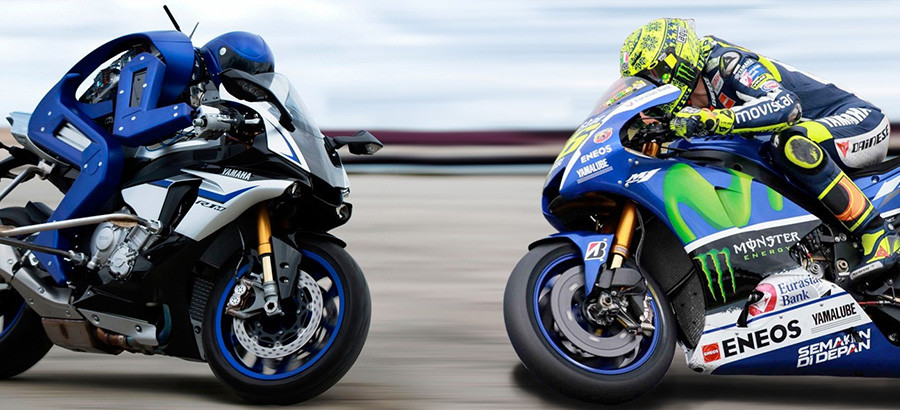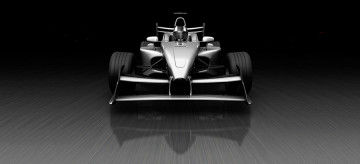- Advertising
- Bare Metal
- Bare Metal Cloud
- Benchmarks
- Big Data Benchmarks
- Big Data Experts Interviews
- Big Data Technologies
- Big Data Use Cases
- Big Data Week
- Cloud
- Data Lake as a Service
- Databases
- Dedicated Servers
- Disaster Recovery
- Features
- Fun
- GoTech World
- Hadoop
- Healthcare
- Industry Standards
- Insurance
- Linux
- News
- NoSQL
- Online Retail
- People of Bigstep
- Performance for Big Data Apps
- Press
- Press Corner
- Security
- Tech Trends
- Tutorial
- What is Big Data
AI, Machine Learning and Sexy MotoGP Bikes
'Tis the season to be jolly as MotoGP is at a full throttle in 2018. Last Sunday we have seen one of the best races in the past years, with more than 100 overtakes and 6 different riders leading the race. However, unfortunately for the other competitors, there is always one problem: Marc Marquez. If you ask us, he might be the robot in this story, but until we fix our learning algorithm on that topic, let’s dive into the fun part, the AI and Machine Learning used in MotoGP.

Tis the season to be jolly as MotoGP is at a full throttle in 2018. Last Sunday we have seen one of the best races in the past years, with more than 100 overtakes and 6 different riders leading the race. However, unfortunately for the other competitors, there is always one problem: Marc Marquez. If you ask us, he might be the robot in this story, but until we fix our learning algorithm on that topic, let’s dive into the fun part, the AI and Machine Learning used in MotoGP.
One would think the hardest part of driving a MotoGP bike is lowering your body so much that your knee touches the asphalt while turning. So wrong. The hardest part of driving such a bike is… starting it. Starting a bike with more than 250 horsepower without lifting the front wheel takes a trained hand of a genius, as even in their 5th gear they are still incredibly hard to control and keep on both wheels. Same goes for data. The MotoGP bikes generate an enormous amount of data due to the ever-growing electronics added on the bikes to improve performance. Equipping the bikes with electronics is quite easy, but the hard part is matching the data with the rider’s feedback and reaching the optimal conclusion.
Gigi Dall’Igna, Ducati Course General Manager, who has got two World Superbike titles, among others, was given the challenging task of steering the Ducati racing ship back on course, after its factory racing efforts in both MotoGP and World Superbike began to founder, as stated by sportrider.com. As such, he turned to big data besides turning to Lorenzo (not much of a turning for that matter) and implemented the first IoT and AI technologies into the Ducati’s bikes for the MotoGP competition.
The purpose of the project is to help the Ducati team simply make better decisions when it comes to the bike configurations. Each year, the MotoGP bikes need to be configured for 18 tracks, and each time there are endless possibilities. That is where the machine learning algorithms come in, and according to Ducati’s statements, it has made a difference in making the right decision when it comes to bike setup.
To go big on big data, Ducati implemented an AI and IoT project, so they can simulate the behavior and performance of the bike under various conditions. The sensors on the bike, ranging from 40 to 100, collect data such as speed, engine running parameters, revs, tire and brake temperatures, acceleration, oscillation, vibration and grip. Once the data is collected, AI is applied to figure out the right configuration. According to their statements, around 4,000 sectors of race tracks and 20 different racing scenarios have been analyzed, with a wider roll-out of the solution expected. Moreover, the machine learning techniques can also predict the performance and behavior of the bike after a setting change. More details on silicon.co.uk.
When it comes to bikes, Ducati is not the only manufacturer turning to big data for insights. Yamaha also goes big on AI and ML and created an updated version of its self-driving motorcycle that after 3 years of learning, went on a circuit and competed with Valentino Rossi’s time. Equipped with a humanoid robot, MOTOBOT managed to do a complete lap of the circuit, but without being even close to Rossi’s time. We’re still impressed. And a bit freaked out: Yamaha boldly predicts the bot will outperform Rossi within two years, and that freaks us out even more. However, the purpose of the project is not to build a bike that could compete in MotoGP, but to improve the existing street bikes, making them safer for riders.
Feast your eyes:
Moreover, speaking of The Doctor and Yamaha racing, Valentino Rossi’s data has been collected and stored since the beginning of time, and it is used to further improve the bike and the rider’s performance.
“From data, we can tell a lot of things, because we have sensors telling you information about the dynamics of the bike, so the braking, accelerating, throttle. Then we have a lot of sensors providing information about the engine performance and many other sensors that are diagnostic for the bike. Basically, I can tell you everything about the bike,” states Valentino Rossi's Data Engineer Matteo Flamigni.
Another fine example of big data done right in MotoGP is John McGuinnes, the 21-time winner at the Isle of Man TT, the hardest and most dangerous bike competition in the world, that has taken 245 lives in its 107-year history. John had one question: why is he that good, what makes him so performant? As such, together with EMC and Senior Road Tester Adam “Chad” Child dived deep into the data unknown. They did a practice test session in Spain, collected data from both bikes as well as their bodies as they were riding a 6 laps mini race of a 4,000 meters course.
During the session, bike sensor data was collected such as engine, transmission, throttle, accelerometer, gyroscope and others; biometric data such as heart and breathing rates and calories; and GPS data: three different sets of GPS readings to maximize accuracy.
To make things fun, two competitions were open to the public, one in which the community had to build a model that could explain John’s success, Modeling Motorcycle Math, and one that challenged competitors to put all the data together into comprehensive dashboards, Visualization Motorcycle Math.
For the Modeling Motorcycle Math, the winner had an interesting and unique approach. He determined that the bike and rider position were more important in understanding John’s speed, rather than mechanical variables. As for the Visualization Motorcycle Math, the winner managed to let the user conduct their own analysis on a section-by-section basis.
There’s nowhere to escape, nowhere to hide, and we don’t even want to. Big Data and the algorithms that go hand in hand with it makes our lives easier, helps us improve and grow at a much higher pace. However, there are still old fashion people out there that when talking about bike riding, still feel that the rider’s feedback is the one to be taken into consideration. Casey Stoner, two times MotoGP World Champion (Ducati 2017) and Honda (2011), and currently test rider for Ducati, is a great supporter of the rider’s feedback. After being viewed as the only pilot able to win not only races, but a Championship, and occasionally to actually properly ride a Ducati, something that not even Valentino Rossi managed, we have to give him a little credit.
Conclusion? A balance between robots and humans. May we all live in peace.
Readers also enjoyed:

5 Practical Ways Your Business Can Use Big Data Now

Leave a Reply
Your email address will not be published.